Chair's Message
 I was honored to take on the position of Chair as of May 1, and appreciate the opportunity to work with our highly skilled and dedicated board members and staff.
I was honored to take on the position of Chair as of May 1, and appreciate the opportunity to work with our highly skilled and dedicated board members and staff.
British Columbians rely on the Board to be an independent and trusted voice. Since the Board was established 15 years ago there have been significant changes in forest-dependent communities, forest-based industries, government policies, and in the forest itself. To be effective, we need to ensure that our priorities, processes and reports continue to be clear and relevant.
In September the Board will set its future direction and priorities. I look forward to hearing the views of stakeholders as we prepare for these decisions over the next several weeks.
Audit Results Overview
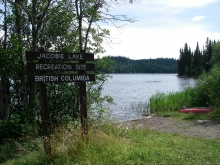 Six audits have been published so far this year. A variety of topics are covered, from woodlot management to government enforcement of forest legislation and management of recreation sites and trails. Licensees continue to meet the basic forest planning and practice requirements of legislation, which is to be expected. The one concern noted involves BCTS’s road maintenance obligations in the Central Coast.
Six audits have been published so far this year. A variety of topics are covered, from woodlot management to government enforcement of forest legislation and management of recreation sites and trails. Licensees continue to meet the basic forest planning and practice requirements of legislation, which is to be expected. The one concern noted involves BCTS’s road maintenance obligations in the Central Coast.
Seed transfer issues continued to crop up last year, in two woodlots most recently. To follow this up, Board staff have been reviewing RESULTS and SPAR, two Ministry of Forests and Range information databases, to determine whether or not this is a widespread issue that requires further assessment. The problem involves planting the wrong trees in a harvested area – called the seed transfer zone. Government sets requirements for which tree seedlings can be planted in different zones across the province because the future survival and growth of the trees is affected by local climate conditions and elevation.
A number of complaints and an audit have found issues with recreation management, and illegal trails specifically. In the Cariboo-Chilcotin, the Ministry of Tourism, Culture and the Arts is doing a good job of managing designated sites and trails with minimal resources. In the Columbia Forest District, government’s new resource management coordination (RMC ) initiative, which combines enforcement staff across ministries and focuses enforcement efforts on government’s top priorities, appears to be doing a good job of covering off the recreation management issues so far. The Board is a little concerned that things may not go as smoothly if forestry activity picks up and puts more pressure on the limited staff resources. The RMC initiative is something we will continue to watch in the upcoming audit season.
The first audits of 2010 got underway in June, with Terminal Forest Products/Black Mount Logging in the Squamish District and Interfor in the Arrow-Boundary District (formerly Pope and Talbot’s forest licence) subject to Board audits. Three other audits will commence in July.
Complaint Investigations And Water Resources
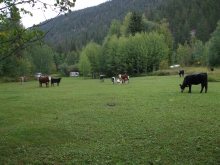 Seven complaint investigations have been concluded so far this year. Of those, five involved potential impacts to domestic water sources to some degree. In one case a person’s water system was damaged as a result of siltation caused by logging road construction. Two cases involved concerns that logging activity would negatively impact the complainants domestic water supply. One complainant was concerned logging would cause flooding and streambank erosion, as well as impact the water supply for his livestock. Another case involved concerns about cattle trespassing on private land and loitering in the vicinity of domestic water sources. In all of these cases people were very concerned about having their water supply put at risk by others who were authorized by government to carry our forest and range activity, with one case actually demonstrating the impacts that can result.
Seven complaint investigations have been concluded so far this year. Of those, five involved potential impacts to domestic water sources to some degree. In one case a person’s water system was damaged as a result of siltation caused by logging road construction. Two cases involved concerns that logging activity would negatively impact the complainants domestic water supply. One complainant was concerned logging would cause flooding and streambank erosion, as well as impact the water supply for his livestock. Another case involved concerns about cattle trespassing on private land and loitering in the vicinity of domestic water sources. In all of these cases people were very concerned about having their water supply put at risk by others who were authorized by government to carry our forest and range activity, with one case actually demonstrating the impacts that can result.
The legislated requirements were followed by the licensees in all cases, although communication and consultation with residents was not always as effective as it could have been. In one case, the investigation was stopped to allow the licensee to continue to carry out consultation with local residents before moving ahead with permit applications. These investigations all illustrate that simply following the legal requirements is not enough to address people’s concerns about domestic water. It requires ongoing communication and follow-up efforts to ensure impacts to water are prevented.
Security and quality of water supply is a major theme in complaints to the Board. We have also examined many water issues through audits and special investigations. To help inform government’s ongoing effort to modernize BC’s Water Act, later this summer we will publish an overview of the water-related issues the Board has encountered over the past 15 years. We hope this will add some useful information and insights to the discussion.
Special Projects
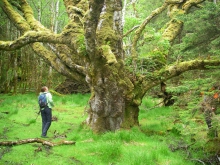 Progress has been made on examining the (Reporting Silviculture Updates and Landstatus Tracking System) RESULTS database. Interviews with those who use the system have been completed. As of June 1, licensees were required to submit annual reports on their activities
Progress has been made on examining the (Reporting Silviculture Updates and Landstatus Tracking System) RESULTS database. Interviews with those who use the system have been completed. As of June 1, licensees were required to submit annual reports on their activities
over the past year. The annual report is submitted through the RESULTS database and the investigation will look at compliance by licensees provincially.
The investigation of old growth management areas and how objectives for maintaining old growth have carried through from land use plans to operations on the ground is proceeding. All land use plans and land use orders related to OGMAs have been collected and reviewed.
Interviews with government staff involved in OGMA planning are underway, and we plan to look at several forest stewardship plans to see how OGMAs are being implemented on the ground. Application of the provincial a-spatial order for maintaining old growth management areas is also being examined as part of this investigation.
Woodlot Management Bulletin
In the course of auditing five woodlots last year, audit staff were reminded of how different woodlot tenures can be, both in terms of physical characteristics and challenges, and licensee sophistication and experience. The learning and experience gained in several woodlot audits over the past few years have been pulled together and form the basis of a bulletin recently published by the Board. Woodlot Licences – What’s a Woodlot Licensee Required To Do? outlines some of the key stewardship responsibilities woodlot owners have, but that they may not always be fully up to speed on. Board staff consulted with the Federation of BC Woodlot Associations in preparing the bulletin, and the association kindly distributed the bulletin to its members.
To get your copy, visit our website at: https://www.bcfpb.ca/wp-content/uploads/2016/11/010-V10_Information_Bulletin.pdf
Fuel Management Report
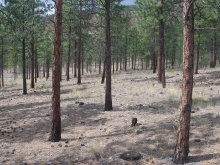 Last summer, the Board surveyed fuel reduction treatments carried out at over 50 wildland-urban interface sites across the province. The status of community wildfire protection plans was also reviewed. This investigation focused on best practices and the experience gained by those who have carried out fuel management work in BC thus far. It all comes together in a report that aims to help those responsible for fuel reduction to get on with the work, in the most effective way possible, while emphasizing the urgent nature of the task. There have been some very good projects carried out to date, and a few that were not so well thought out. Communities’ experiences are described in this report so that others can avoid the mistakes and build on the successes.
Last summer, the Board surveyed fuel reduction treatments carried out at over 50 wildland-urban interface sites across the province. The status of community wildfire protection plans was also reviewed. This investigation focused on best practices and the experience gained by those who have carried out fuel management work in BC thus far. It all comes together in a report that aims to help those responsible for fuel reduction to get on with the work, in the most effective way possible, while emphasizing the urgent nature of the task. There have been some very good projects carried out to date, and a few that were not so well thought out. Communities’ experiences are described in this report so that others can avoid the mistakes and build on the successes.
Since the Board published this reminder of how important it is that this work get done, and how much area remains to be treated, funding sources have been drying up, a low winter snowpack in the interior means forests are dry, and the concerns about fire readiness have continued to grow, particularly for First Nation communities. This will continue to be a hot topic as fire season gets underway.
Website Stats
Top 5 Reports – January to June 2010 (# downloaded)
- Managing Forest Fuels in the Wildland Urban Interface (265)
- Road Relocation through High-Value Caribou Habitat near Tsus Creek, East of Prince George (115)
- Range Planning under the Forest and Range Practices Act (97)
- Biodiversity Conservation during Salvage Logging in the Central Interior of BC (96)
- Landslide Occurrence Following Major Rainstorms on Vancouver Island (94)
Meetings And Events
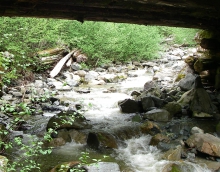 Staff gave a presentation on Board work at the Peace Water Workshop in Dawson Creek in February. This multi-agency working group is concerned with water quality in the Dawson Creek area. Marvin Eng presented the results of some work on cumulative effects of development on water quality in the Kiskatinaw River Watershed.
Staff gave a presentation on Board work at the Peace Water Workshop in Dawson Creek in February. This multi-agency working group is concerned with water quality in the Dawson Creek area. Marvin Eng presented the results of some work on cumulative effects of development on water quality in the Kiskatinaw River Watershed.
Marvin also gave a presentation titled “Land Use Planning – Which Way from Here?” at the annual gathering of the Southern Interior Silviculture Committee, April 13-14 in Naramata, BC.
The new Chair, Al Gorley, has made it a priority to attend as many annual general meetings and conferences as possible to be able to connect with the people and organizations most involved with and affected by the Board’s work. Since the beginning of May, Al has been to the First Nations Resource Opportunities Conference, the annual Applied Biologists Conference, the Global Forest and Paper Industry Conference, the BC Resources Expo, the Bioenergy and Renewable Energy Conference, and the Commonwealth Forestry Conference.
Bon Voyage And It's A Boy!
 Which of the following professions are not employed by the Forest Practices Board? (answer at bottom of page)
Which of the following professions are not employed by the Forest Practices Board? (answer at bottom of page)
a. Professional Forester
b. Professional Biologist
c. Professional Engineer
d. Lawyer
e. Chartered Accountant
f. Certified Environmental Auditor
At the end of March, a retirement gathering took place in Victoria to honour outgoing Board Chair, Bruce Fraser. A big thank-you to everyone who came out, some from as far away as Nelson, BC, to share memories, stories and laughs with Bruce that evening.
At the end of May, board member Debbie Zandbelt welcomed her second child, a son Noah. Congratulations to Debbie and her family.
ANSWER: c. Professional Engineer. However, the Board hires professional engineers, with forestry road experience, on contract to carry out audits as part of a team of ssionals.

